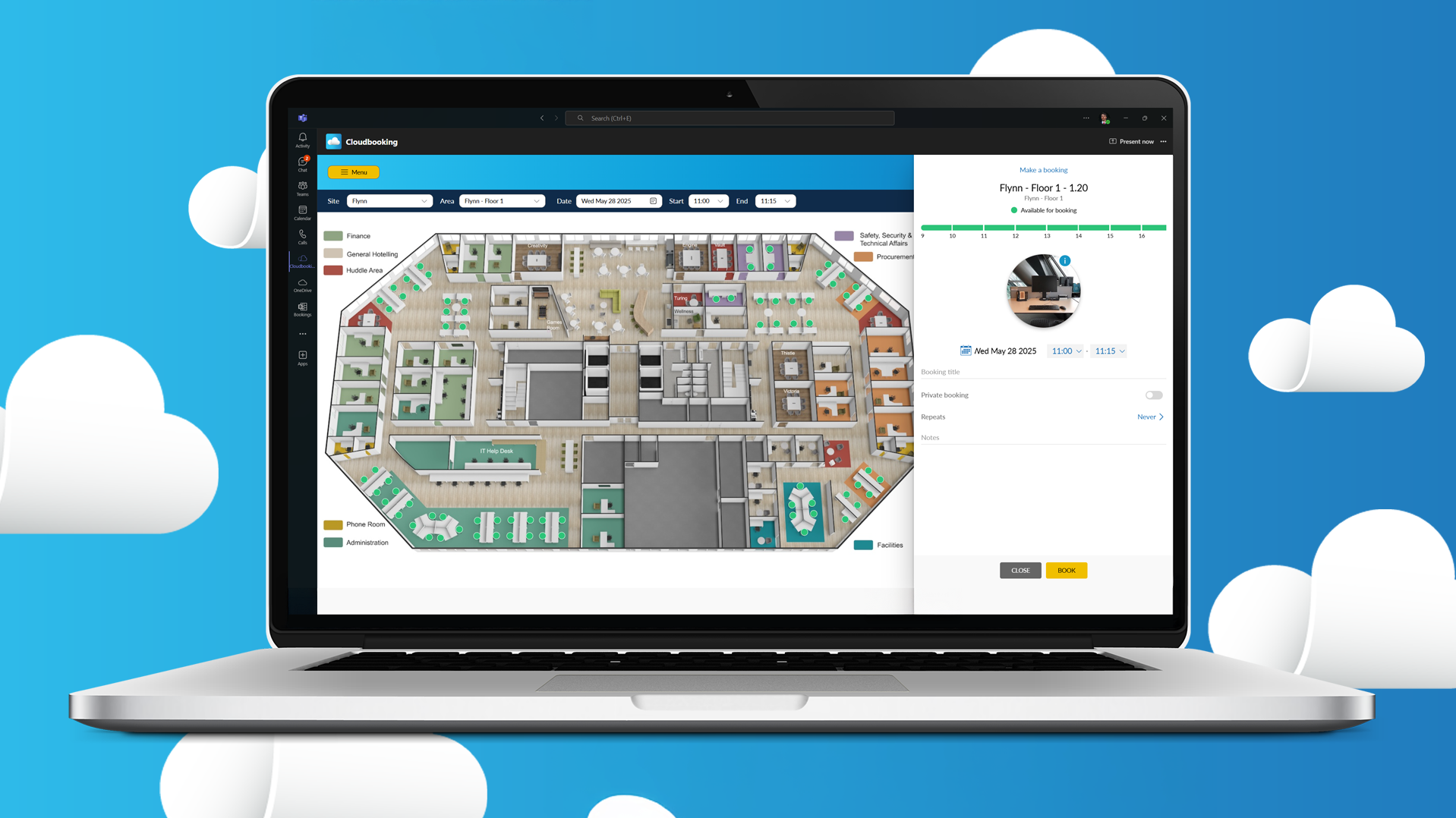
If you’ve been paying attention to the world of work over the last couple of years, you will have noticed the increased proliferation of job postings offering hybrid working. For anyone that doesn’t know, hybrid working gives employees a “best of both worlds” workplace strategy that allows them to control where they work. This means hybrid workers can choose to work from home, their local cafe, or the designated office space, depending on their preference. Although hybrid living has many benefits, it poses an implementational challenge that hasn’t been seen before. This is why knowing how to write your hybrid-working policy will be necessary.
“Hybrid work represents the biggest shift to how we work in our generation. And it will require a new operating model, spanning people, places, and processes.” (Satya Nadella, Microsoft CEO)
Thanks to this freedom and flexibility, the popularity of hybrid working looks set to go from strength to strength. In fact, 83% of workers prefer a hybrid work model, while 63% of high-growth companies have already adopted a “productivity anywhere” workforce model. And although it is not mandatory, having a clear hybrid-working policy outlining the parameters of the businesses’ approach to hybrid working will be critical to the success of a hybrid-working strategy. Here at Cloudbooking, we want to show you how to write a hybrid-working policy, breaking down the nine aspects it needs to cover.
What is hybrid working?
Hybrid working is a type of flexible working that breaks the entire workforce into three groups; those who work from the office, those who work remotely, and those who are allowed to work remotely or from the designated office space. Which individuals make up these groups will usually be decided by personal preference, job role, and circumstances.
Although the traditional office experience isn’t set to become a thing of the past just yet, it does appear that employees are having their say, and they want hybrid working to stay. According to the employee, census carried out by Cloudbooking and YouGov, 55% of respondents want a mix of office and home-based work, while a further 9% want a combination of home, office, and approved public space.
As organizations look to appease this desire for more freedom and flexibility, many companies are attempting to adopt the hybrid work model without sufficient planning and care. A hybrid-working policy is one of the most important aspects of a successful hybrid-work model.
Rewrite Required
Although most companies have their own set of policies and processes, these are very likely to need a complete rewrite to clearly outline the parameters of the business’ approach to hybrid working. A hybrid-working policy aims to ensure fairness, collaboration, and productivity as workers move freely back and forth between the office and their desired remote environments.
A successful hybrid work policy will provide the basic outline of the expectations of each role and how it will function. By setting this out clearly, employees will understand what hybrid working will mean for them, whether in the office or at a local coffee shop. Your hybrid-working policy should also ensure fairness and avoid bias, outlining expectations such as how employees will treat each other moving forward, career progression opportunities, and which roles, if any, have greater flexibility.
What is a hybrid-working policy?
A hybrid-working policy is an agreement outlining the approach to hybrid working and business parameters. You clearly outline where, when, and how employees can work. You should also outline the best practices that every employee should follow, which roles and employees are allowed to work hybrid, and breakdown the legal rights of hybrid employees. By outlining this information early, you can set expectations, mitigate any issues or complaints, and hold hybrid employees accountable.
What should your hybrid-working policy include?
Before 2020, the rate organizations adopted hybrid-working practices had been described as glacial. However, the unprecedented events of 2020 and the spread of coronavirus meant that jobs and roles once considered unsuitable for flexible working are now successfully carried out by hybrid workers worldwide.
As we look ahead, hybrid working looks set to increase in popularity over the next 12 to 18 months. Many large organizations like the Co-op and the University of Dundee have already adopted a hybrid-working policy. However, the model is imperfect and requires continual re-optimizing and monitoring.
Although it would be far simpler if there were a one-size-fits-all approach to hybrid working, unfortunately, there is no way to implement hybrid working that doesn’t require customization and adaptation depending on your organization. Below, we examine areas to consider when outlining your hybrid-working policy.
1. Procedure
Hybrid working is a form of flexible working, so there is likely some form of flexible-working policy already in place. Therefore, it could be possible that the existing policy could be amended or updated to become the new hybrid-working policy. However, there could be several significant differences between the modern-day hybrid-work model and the pre-2020 flexible-work policy.
Flexible working requests used to be made on a more individual level; however, we can safely say that demand for hybrid working will be high. This may mean your hybrid-working policy must be redefined at a team level. Indeed, whatever option is best will depend on your business and circumstances.
Before you develop or update your hybrid policies, it is essential to take the following aspects into account:
- Understand how the latest hybrid-working policies work concerning other forms of flexible working, such as agile working, part-time, and remote working.
- Outline the process by which employees can request hybrid working.
- Determine which employees or roles are eligible for hybrid working and which employees have less flexibility.
- Review and adopt other policies that might be impacted by hybrid working. These include procedures like IT usage, data protection, international employees, working from home, expenses, etc.
- Define responsibilities and roles for hybrid workers and management.
2. Legal implications of hybrid working
While hybrid working can offer a range of benefits for both the employee and the employer, one of the areas that can cause a major headache for employers is the legal implications. Employers must ensure legal protections are in place that will allow them to look after the wellbeing of employees while also meeting the additional obligations that hybrid working brings. As an employer, you will have the same responsibility to look after the health and safety of people working from remote environments as those working in an office.
Another important legal point to consider is the contractual implications. Employee contracts should clearly state the location at which work is carried out. Employees who work permanently from home should inform their landlord and housing insurer and place their home address as their workplace. With a new hybrid-working policy, it might become a requirement to change the terms and conditions of employment.
3. Communication
Communication is vital in any business, but when it comes to hybrid working, effective communication is critical. There are fewer face-to-face interactions and fewer watercooler chats, so communication is often poor unless it is a serious management focus. Poor communication can lead to ineffective team working, exclusion of remote employees, knowledge gaps, and unhealthy workplace culture.
How your hybrid teams should work together and communicate depends on the roles and the size of the organization. Here is a list of some of the main recommendations to ensure effective communication within your hybrid team:
- Organize regular social events and opportunities for human interaction. This will help with team building and improve workplace culture.
- Use communication platforms and asynchronous tools to improve flexibility and encourage communication. Using tools like Slack or Microsoft Teams, you can limit the number of unnecessary video meetings and enable employees to enjoy a more flexible schedule.
- Encourage teams to establish a level of communication that suits them.
- Make sure that communication is inclusive to all employees.
- Meetings should be held online. This will help ensure remote employees are not left out of crucial meetings and don’t miss critical information.
4. Manager training and development
Although many managers and senior employees will have learned to deal with remote employees during the pandemic, managing a completely hybrid workforce has its own challenges.
Organizations must prioritize learning and development, so managers are prepared to lead their teams by adopting new ways of working.
Areas of development and training that should be of particular focus when it comes to a hybrid working include:
- Developing communication skills
- Effective performance management
- Team building
- Encouraging collaboration
- Managing hybrid-working requests
- Inclusion and diversity
- Employee engagement
- Effective onboarding.
5. Technology and equipment
Technology plays a massive role in almost every aspect of business in the twenty-first century. However, it is even more critical when it comes to hybrid working. The latest technology enables teams to communicate, connect, and collaborate wherever they are based around the world.
The global pandemic in 2020 meant that many organizations and employees had to get up to speed with the latest technologies, such as video conferencing software and communication tools. Although this will help facilitate the transition to a hybrid-working model, there is a requirement in your hybrid-working policy for training and support for less tech-savvy team members.
You may want to think about the following points when developing a hybrid-work policy:
- Provide tools and software to facilitate hybrid workers
- Support employees with training for software and tools
- Implement security measures to ensure data integrity. An example of this can be seen in the hybrid working policy of the Rotherham Metropolitan Borough Council.
Cloudbooking’s hybrid work software enables hybrid teams to seamlessly move between home and the office and use collaboration spaces to meet with other team members. These workplace management tools include:
- Desk booking software
- Meeting room booking software
- Carpark management software
- Visitor management software
6. Employee wellbeing
The long-term impacts of hybrid working should lead to improved employee wellbeing overall, thanks to greater freedom, more time for health and wellbeing activities, and increased time at home with the family. However, hybrid working presents work-life-balance-related challenges that must be factored into your hybrid-work policy.
To help your employees adapt to hybrid working, you should support them in the following ways:
- Educate managers to be aware of any potential signs of poor wellbeing or mental health problems. These tell-tale signs can often be more challenging to spot in hybrid and remote workers.
- Provide employee assistance programs (EAP) or mental health support for all employees.
- Train employees to develop a healthy relationship with technology usage.
- Offer support to employees struggling to manage their work-life balance.
- Ensure managers and employees understand the risks and implications of hybrid working.
7. Performance management
In the past, performance was often correlated with time spent in the office. However, this is not always the best indicator of performance or productivity. As it is impossible to visually measure the time and effort hybrid employees put into their work (unless you use software like Hubstaff to track employee productivity and screen time), employers must develop new outcome and deliverable-based performance indicators.
As you develop your hybrid-working policy, it is also essential to factor in the following points:
- Does your organization currently reward and encourage presenteeism? Can this be changed?
- Are performance management systems suitable for a remote-work strategy?
- One-on-one meetings are vital for remote workers. They give both the employer and the employee time to discuss performance.
- Is good performance rewarded? Recognition is just as crucial as addressing poor performance.
8. Inclusion and equality
Hybrid working and the global pandemic threw up an unacceptable amount of inequality-related problems. For example, women were furloughed for longer than their male counterparts. It also turns out that COVID-19 had a far more significant impact on people from ethnic minority backgrounds.
While these problems mainly relate to the COVID-19 pandemic, there is often an “out of sight, out of mind” attitude in business, which means that remote workers may fail to be included in certain activities or even get overlooked when it comes to progression opportunities.
When developing your hybrid-working policy, you must pay close attention to equality and inclusion by ensuring every employee has the same experience and equal opportunities.
9. Employee lifecycle
Hybrid working and increased flexibility can significantly affect every aspect of your employee lifecycle. As you transition to a hybrid-workplace strategy, it is vital to take a step back and examine the suitability of your employee lifecycle and ensure hybrid employees can work effectively.
It would be best if you considered the following:
- Ensure recognition is not biased towards in-office employees
- Adapt performance management systems
- Support the career development of hybrid employees with learning opportunities
- Improve induction processes to help hybrid employees adopt the company culture and build relationships
- Support HR by advertising hybrid-working availability in the recruitment process.
Hybrid success is around the corner.
The power dynamic between employees and organizations has changed. Businesses have started to understand that offering workers increased freedom and flexibility is essential to retaining their top talent. Thankfully, hybrid flexible working, in particular, has come to the rescue, offering both workers and employers a practical compromise.
The COVID-19 pandemic gave hybrid working the perfect trial run, and it passed with flying colours. It looks set to go from strength to strength as more organizations adopt this highly flexible approach.
By writing and developing a functioning hybrid-working policy, you protect yourself against future crises and gain an advantage over competitors with traditional-workplace strategies. Although adopting flexible working may take time and effort, you can give yourself the best chance of success by following our expert advice.
Successfully adopt your own hybrid-work policy with the help of Cloudbooking’s hybrid working solutions. Contact us now for a no-obligation product demo.









